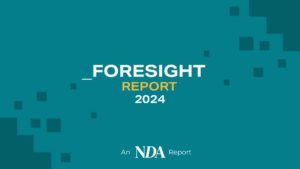By Andy McNab, VP EMEA, Fanplayr
The banning of third-party cookies by Google and the other major browser companies should be top of the mind for everyone in e-commerce.
Apple and Firefox have already ended third-party cookies and Google will make its own move in 2022. But with more than 60 per cent of the browser market, Google’s decision is the most significant. This axing of third-party cookies follows the increase in privacy concerns following the EU’s GDPR (General Data Protection Regulation) and the CCPA (California Consumer Privacy Act) in California.
Once it takes effect, organisations will still be able to use first-party cookies for their own domains, but the use of third-party cookies to monitor what visitors do on other domains will stop.
This will have major consequences, stopping up the flow of meaningful data about where customers go and what their habits are online. For years, third-party cookies have provided the data-fuel for personalisation so that an organisation can optimise how it interacts with consumers on its website. This information has also been critical to the accurate targeting of internet advertising.
Unless organisations radically rethink their approaches and implement far more innovative personalisation solutions using their own website data, they are likely to witness a big dip in revenues from next year. Individual consumer behaviour could be lost in a mass of internet information that is almost impossible to use for personalisation.
Google revealed the potential impact on revenues
Google itself has acknowledged the potential impact of its actions on revenues. Analysis by the company of the 500 largest Google Ad Manager publishers globally over three months found where no cookie was present, revenues plummeted by an average of 52 per cent compared with traffic where there was a cookie. This is one of the reasons behind its Privacy Sandbox initiative – an attempt to create a secure environment for personalisation that also protects user privacy. Little in the way of meaningful results has come out of this so far, however.
Although we know Google plans to end the use of third-party cookies, information has only trickled out, which is why companies may not have fully grasped the seriousness of the situation. It has not helped, either, that each browser operator has its own interpretation of how to deal with third-party cookies and privacy. Most browser companies are restricting storage access where cookies have been identified and classified as compromising user privacy. However, Safari has followed a different tack with its Intelligent Tracking Prevention. This uses multiple methods to restrict storage access for third parties algorithmically classified as having cross-site tracking capabilities.
Whatever the approach, brands will have to battle harder to attract consumers to their sites, using keywords and SEO-optimised content.
Once consumers are on a company’s website, however, it should be a different story. Advanced tools are already available, employing behaviour analysis, segmentation and personalisation to supersede the insight provided by third-party cookies.
Retail websites must implement AI-powered personalisation
AI-driven technologies, for example, analyse and act on the data generated by consumers as they visit a website. This gives companies a faster, more sophisticated and profitable way of interacting with consumers. The technology stores just the unique ID of the user in a first-party cookie so is not affected by privacy restrictions. It remembers each visitor and their visit but without using any other information, which is the type of website-tool cookie people use when logging into Facebook.
The data from this cookie enables a company to extract highly valuable insights. It can, for example, indicate when consumer behaviour indicates a visitor is close to buying, or, alternatively, has “exit intent” and is about to leave the website. The AI solution monitors the consumer’s behaviour in detail, delivering a discount, offer, promotion or recommendation at exactly the right moment. Using customised sets of rules, it can interact with them in real time to provide a positive outcome without becoming intrusive or creepy. This is based on the consumer’s current and previous behaviour and what they may have put in their basket.
Contrast this with the clumsy and unprofitable way many organisations offer discounts, undermining their P&L before they have any real idea of what a consumer wants, their usual behaviour or their likely value. A retailer should have a solution that guides a consumer through their journey with persuasive recommendations and knows from past history and profile when it is time to close a sale or trigger a decision with the right level of offer.
This more sophisticated and personalised approach puts an end to annoying and irrelevant pop-ups. If this AI segmentation and personalisation solution is part of a more advanced single, integrated platform, retail brands can use the data and analysis to personalise marketing content in SMS messages and emails sent to consumers who consent. This delivers far better results through precise targeting.
A single platform – easier to implement and more capabilities
Using a single platform also has another major advantage. It is much easier to implement and far more efficient and streamlined than the alternatives. Shackling together separate solutions for different parts of the customer journey such as reduction of basket abandonment or to boost upsell tactics, is complex and seldom as effective.
This focused, single-platform technology is the advanced AI-driven approach brands need as the third-party cookie apocalypse becomes closer to reality. It will enable organisations to rise above the swamp of web data where they will lose track of what customers are doing and what they want.
When all the main browser companies end third-party cookies successful brands will be those adopting first-party cookie data to segment and personalise in real-time as visitors are on their site. The best and most profitable way to achieve this is through a platform that integrates the latest advances in AI technology. This is not only easier to implement, it streamlines the experience for customers and gives organisations significant new capabilities beyond third-party cookie data analysis.









